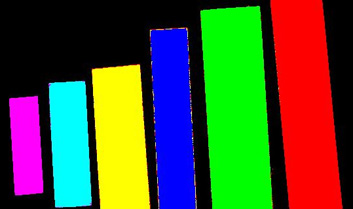In near-infrared spectral imaging object is imaged line by line and with the help of a spectrograph attached to the camera, the spectrum of a single dot can be recorded. In this case, the reflection spectrum, which describes reflected light’s intensity as wavelength’s function. Spectrum can be called as the substance’s “fingerprint”, from which a substance can be recognized. Every substances reflection spectrum is different because photons reflected from a substance are reflected and absorbed differently on different wavelengths when colliding with different chemical bonds.
Satakunta University of Applied Sciences has been doing near infrared spectral imaging for the past eight years and there are many types of application areas. One good example for this is recognizing different plastics. This application is usable for example in recycling and waste disposal centers. Plastics go on a conveyor in this application, and camera captures images of them. Image is analyzed and the result is an image where plastics are shown with different colours. From this image, we can clearly see which plastic is which.





